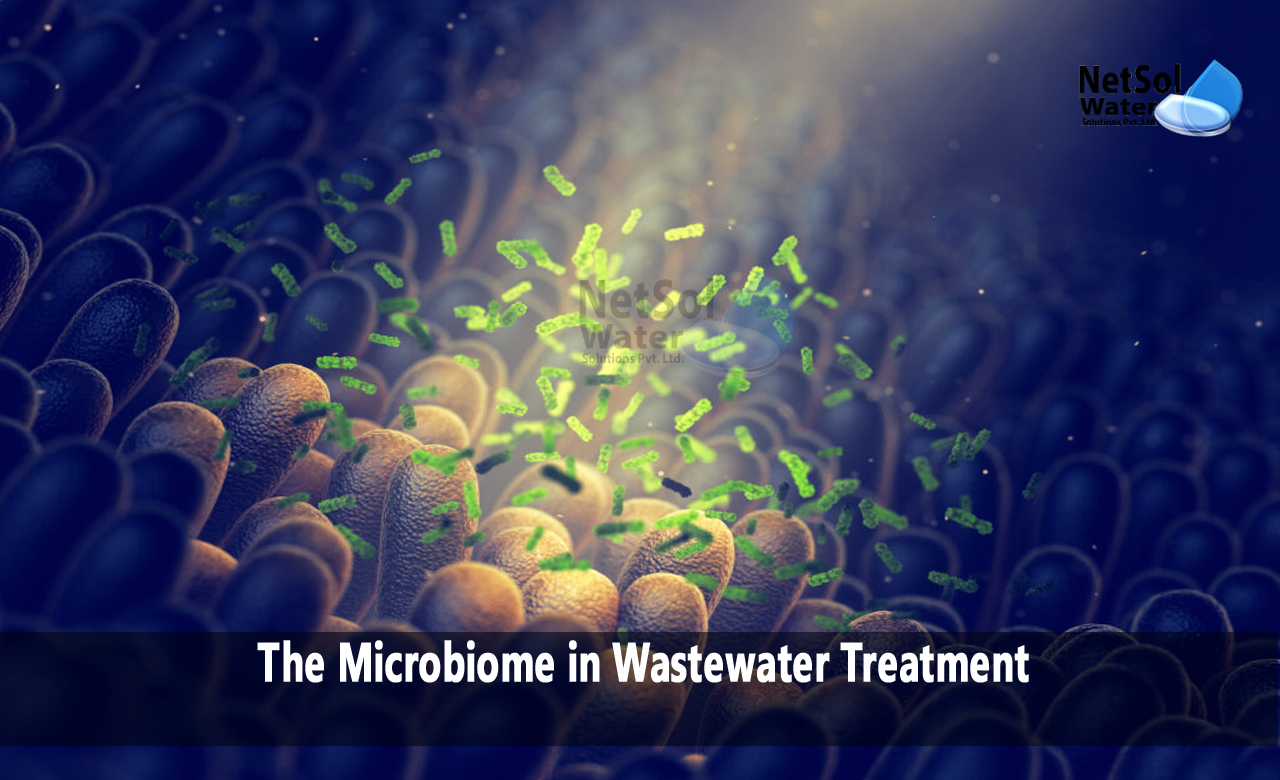What is the role of Microbiome in Wastewater Treatment?
An essential step in ensuring the safe disposal and recycling of water while safeguarding the environment is wastewater treatment. Beneath the surface of this vital system is an intricate and captivating realm known as the microbiome. This blog will discuss the importance of microbial communities in wastewater treatment and the need to comprehend them in order to develop efficient treatment procedures.
The Microbiome in Wastewater Treatment
The community of microorganisms that live in a specific environment, such as bacteria, fungus, viruses, and archaea, is referred to as the "microbiome". Microbial communities are the unsung heroes of wastewater treatment; they break down organic matter and contaminants and cleanse the water so that it is acceptable for reuse or disposal.
These microbial communities are essential to the degradation and removal of pollutants by biological treatment procedures in wastewater treatment plants. Activated sludge and biofilm reactors are the two main biological treatment methods; these two systems each contain unique microbial communities.
· Activated Sludge: In this procedure, wastewater is treated by suspending microbial flocs. A wide variety of microorganisms that feed on organic stuff and break it down into simpler molecules make up these flocs. These microorganisms' development and activity are essential to the activated sludge process' ability to filter water.
· Biofilm Reactors: A biofilm is a slimy covering that forms on surfaces as a result of microbial colonies adhering to them. When contaminants move over the biofilm, these populations metabolise them. Because of their exceptional ability to remove contaminants, biofilm reactors are frequently employed in a variety of wastewater treatment applications.
Why Understanding Microbial Communities Matters?
Enhanced Wastewater Treatment Efficiency: Operators of wastewater treatment facilities can optimise processes by having a thorough grasp of microbial populations. Treatment plants can maximise microbial activity and reduce costs by optimising settings for specific microorganisms that are active under particular conditions.
Resilience and Stability: Microbial communities are sensitive to changes in their environment. Maintaining system stability requires an understanding of the diversity and composition of microorganisms in a treatment system. Understanding this is essential to avoiding disruptions and guaranteeing steady treatment efficacy despite changes in the surroundings.
Biological Nutrient Removal: In order to safeguard receiving waterways, certain wastewater treatment facilities try to remove excess nutrients like phosphorus and nitrogen. A crucial part of these activities is played by microbial populations. Operators can create effective tactics to increase nutrient removal by knowing which bacteria are involved.
Adaptation to Emerging toxins: Knowledge of microbial communities becomes increasingly more important as new pollutants and toxins enter the wastewater stream. These communities can change and develop to degrade novel substances, but it takes time and particular circumstances for this to happen. Understanding microbial communities can aid in treatment plants' ability to adjust to new difficulties.
Reuse of Water: Wastewater that has been treated can be recovered and used for a variety of non-potable uses, including industrial operations, irrigation, and power plant cooling. By doing this, the demand for freshwater resources is decreased, protecting this valuable resource.
Challenges and Future Directions
Even though wastewater treatment microbiomes have several advantages, there are a few issues that must be resolved:
Microbial Imbalances: Process breakdowns or inefficiencies in treatment can result from disturbances in microbial ecosystems. Seasonal changes, harmful substances, and excessive influx are some of the factors that might upset the microbial balance and necessitate constant observation and control.
Emerging Contaminants: Wastewater treatment facilities need to change in order to efficiently remove new contaminants that appear in wastewater, such as medications and personal care items. The creation of novel microbial consortia and technology may be necessary for this.
Climate Change: Increased frequency and intensity of rainfall events, which can overwhelm treatment systems and perhaps have an impact on microbial ecosystems, are among the effects of climate change that wastewater treatment plants need to get ready for.
Resource Recovery Optimisation: To make wastewater treatment more sustainable, additional research and development is required to maximise the recovery of resources including energy, nutrients, and water.
Conclusion:
The ability of nature to cleanse wastewater and reduce pollution in the environment is demonstrated by wastewater treatment microbiomes. Together, these varied groups of microbes break down organic matter, get rid of contaminants, and help create a more sustainable future. Careful control of these microbial communities, continuous research, and innovation are essential to the success of wastewater treatment in the future. We can use wastewater treatment's microbiome to safeguard the environment, preserve resources, and advance sustainable development by learning more about it.
Netsol Water is Greater Noida-based leading water & wastewater treatment plant manufacturer. We are industry's most demanding company based on client review and work quality. We are known as best commercial RO plant manufacturers, industrial RO plant manufacturer, sewage treatment plant manufacturer, Water Softener Plant Manufacturers and effluent treatment plant manufacturers. Apart from this 24x7 customer support is our USP. Call on +91-9650608473, or write us at enquiry@netsolwater.com for any support, inquiry or product-purchase related query.



